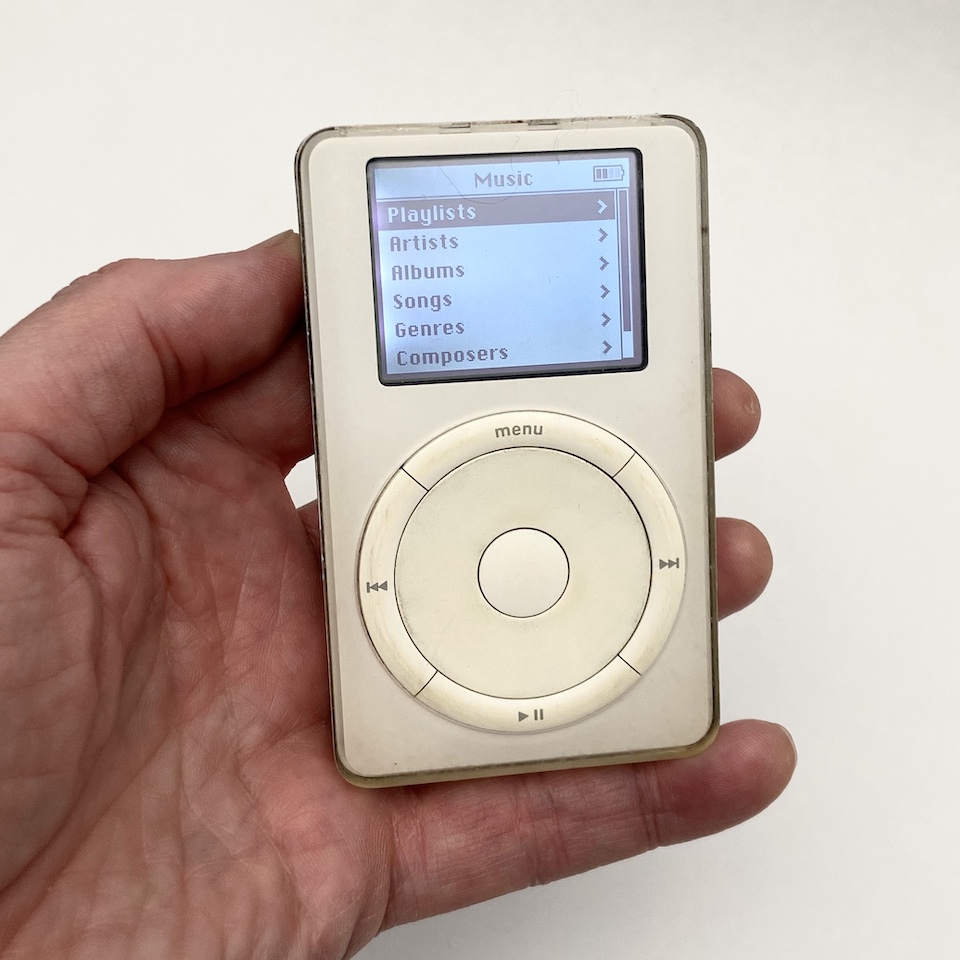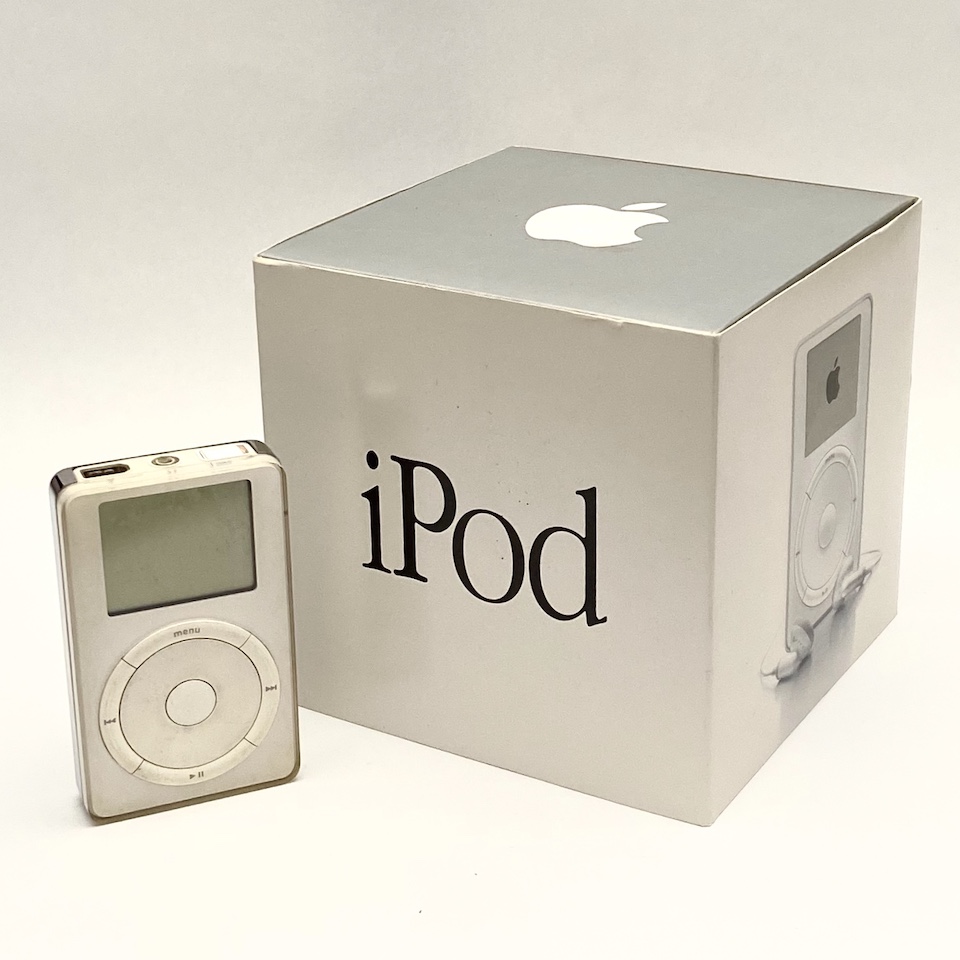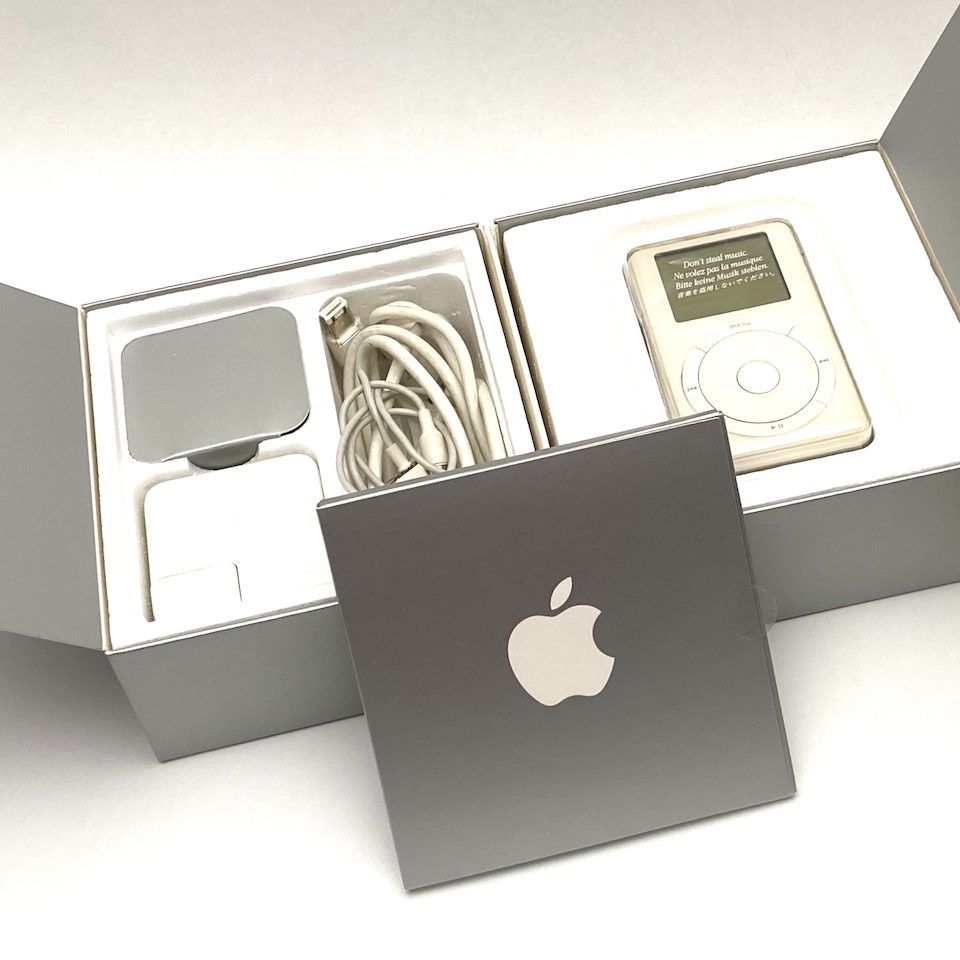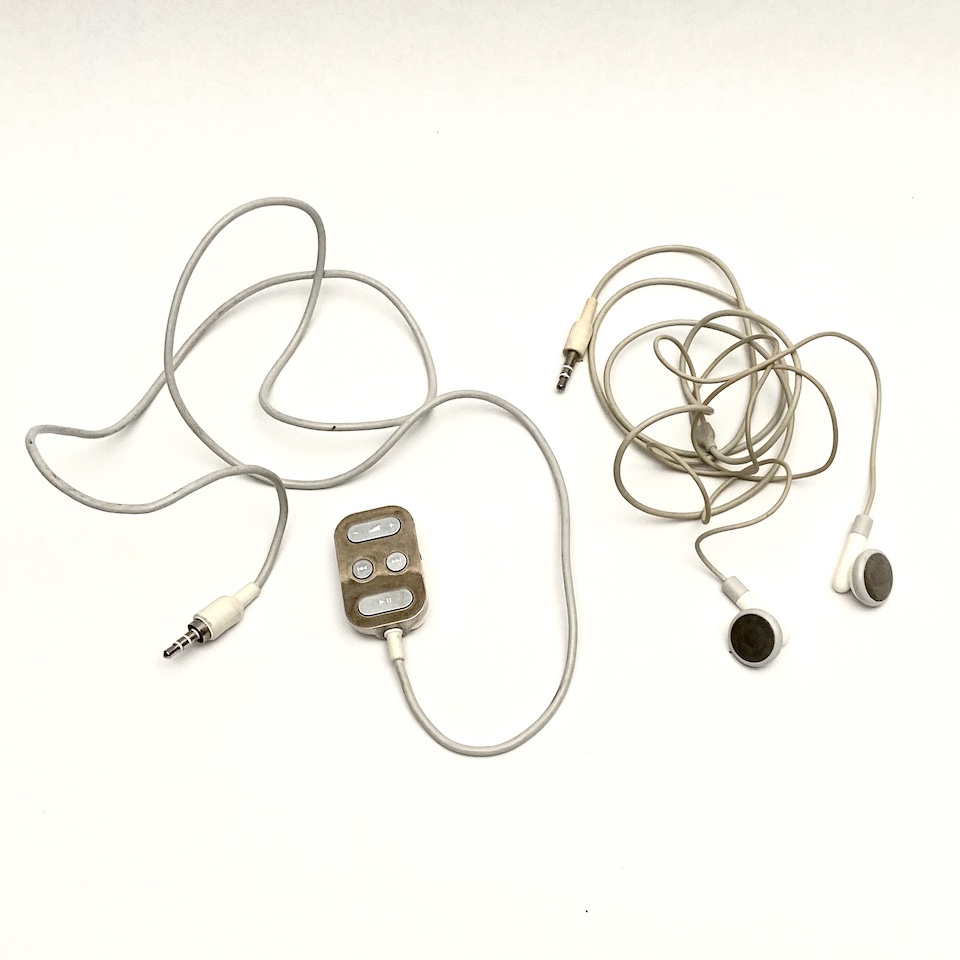Purchased new.

The Apple iPod, released in 2001, was a game-changer in terms of personal music players. No, it was not the first MP3 player, but it was the first MP3 player that was so easy to use that you couldn't resist it. The interface was ingenious, especially the spinning wheel and its surrounding buttons. It fit in your hand and you could work it one-handed with ease.
This is a first-generation 5GB iPod, originally selling for $399 ($581 in today's money). We have its original packaging, its FireWire charger, an after-market longer FireWire cable, and the original headphones. Pictured next to the headphones, we have Apple's iPod remote, an accessory that allowed remotely starting and stopping the audio, and skipping back and forth through the playlist (these capabilities would ultimately be incorporated directly into headphones sold in coming years).
The only way to get music onto the iPod was to "rip" it from CDs into iTunes on your Macintosh (initially, the iPod was Mac-only) and transfer it to the iPod over the same FireWire cable that was used to charge it. Apple boasted of "1,000 Songs in Your Pocket," which was an incredible number for the time, made possible by a tiny 5GB Toshiba hard drive inside the iPod.



Our iPod still works, although the battery life is drastically shorter than its original 10 hours.
I purchased this iPod new in the fall of 2001. I got mine for a discount, as I was at that time an employee at the Apple store. It was the first digital music player that I felt like I wanted to own, and not because of Apple's sales pitch. Previous MP3 players were simply ugly and complex, and the iPod's integration with iTunes made the process of getting music onto the player close to effortless.
I used this iPod until Apple Store employees were given a third-generation model in 2003, with the expectation that the experience of using one would mean we would be more knowledgeable about the product and therefore more helpful to the customers. Although the newer model was more slickly manufactured, now had a USB interface, and had an increased music capacity, the change to a row of touch-sensitive buttons essentially ruined its usability, in my opinion. You could no longer rest your fingers on the buttons, so it was impossible to use without looking at it, and more awkward to use with one hand. Later iPods reverted to a control system much more like the original - so they clearly recognized their mistake.
I no longer have that device, and have long since moved on to playing music from my iPhone, but I have still held onto the original iPod, a cherished memory from a time when Apple would still regularly release something you didn't even know you needed, but then you couldn't do without.
Steve Dockery, MOOT Director of Acquisitions